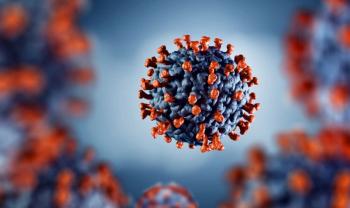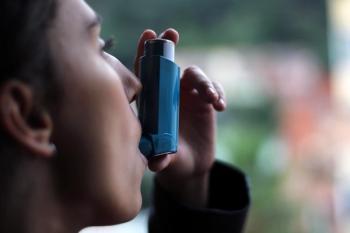
Who should pay for HPV vaccine—the costliest vaccine to date?
The emergence of any vaccine is a complicated event, necessitating physician, pharmacist, and public education and the creation of formulary protocols. But when a drug directly involves issues surrounding the sexual activity of underage girls, complexity devolves into controversy.
The emergence of any vaccine is a complicated event, necessitating physician, pharmacist, and public education and the creation of formulary protocols. But when a drug directly involves issues surrounding the sexual activity of underage girls, complexity devolves into controversy.
That is the case with Merck's Gardasil (quadrivalent human papillomavirus [Types 6, 11, 16, 18] recombinant vaccine), licensed in June 2006 by the Food & Drug Administration for use by girls and women aged nine to 26 years to treat genital human papillomavirus (HPV) infection, one of the most common sexually transmitted infections. Another HPV vaccine, GlaxoSmithKline's Cervarix, is expected to be licensed by the end of the year.
The controversy surrounding Gardasil involves two aspects: who will pay for the drug and whether state laws will mandate inoculation. Those issues take on heightened urgency because HPV infection is strongly linked to cervical cancer. According to the FDA, the new vaccine has demonstrated 100% prevention of the HPV infection associated with cervical cancer.
"This vaccine has the ability to be an absolute boon," said Kamakshi V. Rao, Pharm.D., a University of North Carolina Hospitals & Clinics clinical pharmacist specializing in oncology. "It is an exceptional, exciting development. For the first time, we directly affect the generation of cancer through vaccination, rather than address treatment after emergence. It is a profound drug."
There are about 10,000 new cases of cervical cancer and around 4,000 deaths from the disease every year in this country, according to Gary L. Freed, M.D., a professor and director of the division of general pediatrics at the University of Michigan Health System. He is also chairman of the Department of Health and Human Services National Vaccine Advisory Committee.
"More than 100 different strains of HPV exist, and a significant number of them may actually be precancerous lesions, which will lead to cervical cancer in women," said Freed. "If you get a strain that can cause cancer, that's a very serious issue. So it is a vaccine that can actually prevent cancer in women, which is a remarkable new opportunity in the ability to prevent disease. I think it is incumbent upon society to make sure that we're able to prevent these cancers."
The federal Advisory Committee on Immunization Practices (ACIP) has recommended that all girls be vaccinated at age 11 or 12, and that girls and women aged 13 to 26 be given a "catch-up" vaccination, according to the Centers for Disease Control & Prevention.
The ACIP recommendations are designed to promote vaccination before onset of sexual activity to maximize effectiveness. But they also state that the vaccine should be administered to those who are already sexually active in the recommended age group.
Mandated inoculation is a hot button political issue. Within days of Gardasil's FDA approval, Texas Gov. Rick Perry (R) issued an executive order mandating that all girls entering the sixth grade, beginning September 2008, receive an HPV vaccine. That made Texas the first state to pass a HPV inoculation mandate. Parents who did not want their daughters to receive an HPV vaccine "for reasons of conscience, including religious beliefs," could opt out, Perry said.
The uproar was spontaneous, led by parents and religious groups expressing concern that vaccination would lead to promiscuity. (Perry's position was further politically eroded by the fact that Merck had made a $5,000 contribution to his election campaign.) By the end of April, the Texas legislature overwhelmingly passed legislation to void Perry's order.
"Decisions surrounding vaccination can be highly personal and political," said Rao. "But in the case of cervical cancer, there is a very obvious benefit, a strong case to be made in favor of vaccination."
According to the National Conference of State Legislatures (NCSL), as of April 2007 legislators in at least 39 states and the District of Columbia agreed with Rao. They've introduced legislation to require, fund, or educate the public about the HPV vaccine.
But as of mid-May, Virginia remains the only state to mandate vaccination. That state's law, signed by the governor in April, gives parents exemption rights.
The New Hampshire Health Department announced in January that the state would provide the vaccine at no cost to girls under age 18. South Dakota's Governor also announced a similar plan in January.
A proposal in Georgia was defeated in mid-May after lobbying by religious conservatives, who said vaccinating young girls could promote promiscuity. "It's really a shame that politics and ideology are getting in the way of saving lives," said Cantu Hinojosa, assistant director of government relations for the Planned Parenthood Federation of America, in a public statement.
She said that five statesIndiana, New York, North Dakota, Utah, and Washingtonhave agreed to fund public education campaigns that inform parents about the vaccine and the relationship between HPV and cancer.
Cost issues
The issue of mandates creates significant financing questions. If states do make the vaccine mandatory, who will pay for it? What about Medicaid and the State Children's Health Insurance Program (SCHIP) and youth who are uninsured? And should health plans be required to provide coverage?
The three-dose HPV vaccine is expensive-the most expensive vaccine ever produced at about $360 for the series of three shots. Under state laws, many, but not all, private- and public-sector payers have to cover the vaccine, according to NCSL. But policies about exactly who will be covered and what amount will be paid differ widely.
Because vaccines are most often administered in physicians' offices, especially by pediatricians and gynecologists, reimbursement has become part of the controversy. In public statements, officials of the American Academy of Pediatrics (AAP) have expressed concern that their members will be forced to foot a disproportionate amount of the bill. According to an AAP spokesman, the costs associated with the vaccine "could further strain state vaccine programs already short on resources. States that choose to add HPV to school entry requirements should require insurers to cover the cost of the vaccine, provide additional funding to public vaccination programs, or take other measures to ensure that adequate resources accompany the new mandate."
"We shouldn't be expected to subsidize the public health system and perform our jobs at a loss," said Jon R. Almquist, M.D., chairman of the AAP task force on immunization, in a statement released in mid-May. "We've carried this burden long enough."
Insurance companies and state health departments should think long and hard about the efficacy of adequate reimbursement, agreed Rao. "I would challenge them to consider the cost of adequate reimbursement compared with the cost of treating cervical cancer. I would think there is no question which is less costly in money and suffering."
HPV and HPV vaccine at a glance
The infection:
- HPV infection is widespread. The Centers for Disease Control & Prevention estimates that that as much as 80% of women in the U.S. are infected with HPV by age 50.
- There are more than 100 strains of HPV, with more than 30 types that can cause cervical cancer and genital warts, according to CDC. While most cases of HPV infection resolve on their own, certain strains can lead to cervical cancer, and HPV is the major cause of cervical cancer.
- Cervical cancer is largely treatable, but regular screening through Pap tests is critical for early detection.
- Hispanic and African-American women are approximately 1.5 times more likely to develop cervical cancer than Caucasian women, and they are also more likely to die as a result. Limited access to treatment and early detection, as well as cost, lack of physician referral, and cultural barriers may account for some of this disparity, according to CDC.
- Treatment costs associated with HPV were estimated to total nearly $3 billion in 2000, with the majority due to the spending for follow-up care from abnormal Pap test results, according to the Kaiser Family Foundation.
The vaccine:
- Gardasil (quadrivalent human papillomavirus recombinant vaccine, Merck) prevents infection of four strains of HPV6, 11, 16, and 18, according to the manufacturer. GlaxoSmithKline's Cervarix, which has not yet been approved, targets strains 16 and 18.
- Strains 16 and 18 are associated with 70% of all cases of cervical cancer, and strains 6 and 11 are associated with 90% of genital warts cases. Gardasil is administered in three doses at zero-, two-, and six-month intervals. It remains unknown whether a booster shot will be needed, and if so, when in relation to the initial inoculation.
- Women already infected with HPV can benefit from the vaccine because it can prevent infection from other HPV strains that they may not have contracted. Gardasil does not treat existing HPV infections, and women still need to get routine Pap tests because it does not protect against all cancer-causing strains of HPV. The vaccine has also been approved for use in Australia, Canada, the European Union, and several other countries.
THE AUTHOR is a writer based in Gettysburg, Pa.
Newsletter
Pharmacy practice is always changing. Stay ahead of the curve with the Drug Topics newsletter and get the latest drug information, industry trends, and patient care tips.













































































































































